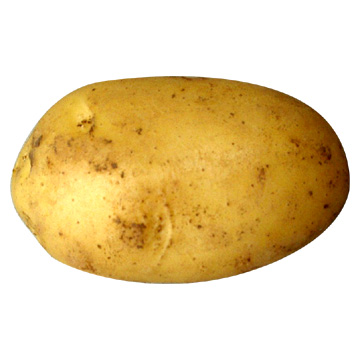A different take on the much-maligned potato
 IF THE POTATO HAD a personality, it might be like Rodney Dangerfield’s: It can’t get no respect. We eat them, but they don’t have the best reputation. And that, say some experts, is just wrong.
IF THE POTATO HAD a personality, it might be like Rodney Dangerfield’s: It can’t get no respect. We eat them, but they don’t have the best reputation. And that, say some experts, is just wrong.
The potato is a great little food package, says Timothy S. Harlan, M.D., aka Dr. Gourmet, and author of Just Tell Me What to Eat. “I love potatoes,” he says. “I think the problem is that they got a bad rap over the last few years, and a lot of that comes from the Atkins and low-carb diets.
“A normal-size potato is going to be 6 ounces,” explains Harlan. This gives you about 100 to 110 calories, roughly the amount in an equivalent portion of pasta or rice, even an apple. But when you double or triple the size of the potato and you add high-fat or high-calorie toppings, you are taking the potato out of the “healthy food” category.
Are potatoes healthy?
A few years ago, the Women’s Health Study, a 15-year study involving thousands of women that looked into heart disease and some types of cancer, examined the effect of potato consumption on health. At first, it seemed as if eating potatoes increased a woman’s risk of gaining weight and/or developing diabetes. But, Harlan points out, ultimately the study found that women who ate healthy portions of potatoes prepared in a healthful manner stayed healthy or even lost weight if they were dieting.
Stanley Kubow, associate professor of dietetics and human nutrition at McGill University in Montreal, agrees with this finding. “The risk of potato consumption may be associated with higher intakes of fats used in their preparation,” he says. He also points out that in North America, if there’s a potato on your plate, there’s very likely meat, as well.
Choosing your potato
The type of potato you choose should depend on your meal plans rather than potential benefits, says Harlan. Starchier potatoes, such as russets, are best for baking, mashing, frying or roasting. If you’re planning on boiling your potatoes or using them in a casserole, waxy potatoes such as red potatoes may be your best bet.
Kubow suggests that to get the most benefit from the nutrients in the various types of potatoes you shouldn’t stick to just one type.
The potato, deconstructed
By eating an average-size 110-calorie potato (with the skin), you’re getting about 45 percent of the recommended daily amount of vitamin C, 18 percent of potassium, 8 percent of fiber and 10 percent of vitamin B6. When discussing the health benefits of potatoes, some people express concern about their glycemic index (GI), stating that a high GI makes potatoes a less healthy food option. The American Diabetes Association explains that the GI of a food is often higher among nutritious foods; their website gives the example of oatmeal having a higher GI than chocolate. GI is also affected by food preparation and cooking. For example, a baked potato has a lower GI than do mashed potatoes. So, as with most things, moderation is the key.
The 2010 Dietary Guidelines for Americans encourages people to get serious about eating enough potassium, which encourages heart health. A potato has almost double the potassium of a banana and even more than broccoli, foods traditionally considered potassium rich. At an average of 62 cents per pound (in 2010), according to the United States Potato Board, the little potato turns out to be the best value for the most potassium. Concerned about fat, cholesterol and sodium? Potatoes don’t have them. Remember, it’s all in the preparation.

